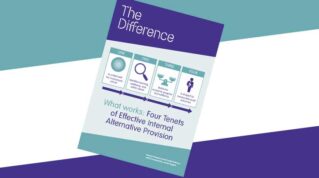The start of a new school year is the perfect time to set a clear direction, establish expectations, and lay the groundwork for success. It’s also an ideal moment to establish a baseline with your staff, giving you a clear picture against which you can measure progress throughout the year.
The best way to do this is a survey – but what should you ask?
Our tool, School Surveys, enables school leaders to create tailored surveys and responses are benchmarked against the daily insights from over 10,000 teachers on Teacher Tapp so you can make informed decisions. With over 300 questions available, however, it can be overwhelming to decide where to start!

To help you get going – whether on our platform, or writing your own surveys – we suggest focusing on four key topics in September. These will take the pulse of your school and establish a solid foundation for the year ahead. (We’ve also included benchmark data from Teacher Tapp to give you a sense of what typical responses might look like).
1. Check Current Morale
September should be a time of optimism as new colleagues and students bring fresh energy. However, it’s important to understand how staff are really feeling. We suggest asking: “How is morale amongst staff at your school at the moment?”Our Teacher Tapp data indicates that only 19% of staff reported high or very high morale last time we asked. If your results are similar or lower, consider following up with additional questions to identify specific concerns to plan for interventions as needed.
2. Assess Quality of Communication
Effective communication is the backbone of a well-functioning school. It ensures everyone is informed, aligned, and feels valued. You might want to ask: “I am usually clear about what’s going on around school – for example, what I need to do, and when.” Nationally, 83% of staff agree with this statement. If your school’s results are lower, consider revising how information is shared across the school. This could involve setting up more regular briefings, improving email clarity, or adopting digital tools to streamline communication. (Also, communicate early about vaccination timetables—it’s one that often surprises and annoys teachers!)
3. Check the Culture of Learning
Setting the tone for a culture of learning is crucial at the start of the year. We recommend asking: “Our school has a culture of learning: students are ready, willing, and able to learn.” Our benchmarks show that only half of teachers agree with this statement. If your results are lower, consider reinforcing expectations with pupils straight away.
4. Look at Professional Development Priorities
September is also a good time to set the stage for continuous improvement among staff. We suggest asking two key questions: “Do staff have clear goals for improvement for the year?” and “What professional development would you like this year?” Nationally, 72% of teachers agree they have clear goals, but only 13% strongly agree. Use the survey results to inform your professional development programme.
The Process After the Snapshot
Surveying staff at the start of the year is just the beginning. The real value comes from what you do with the results.
We suggest:
- Discussing Results with Your Leadership Team: Analyse the data together to identify key areas for improvement.
- Asking Follow-up Questions: If some responses raise concerns, consider running more specific surveys.
- Developing an Action Plan: Create a clear, actionable plan to address the issues raised, including who will do what and by when.
- Sharing Key Findings and Responses with Staff: Transparency is crucial. Let your staff know what you’ve learned and how you plan to respond, reinforcing that their input is valued and acted upon.
To learn more about setting up your school’s survey or to join one of our webinars, visit www.teachertapp.co.uk/school-surveys.
















Your thoughts